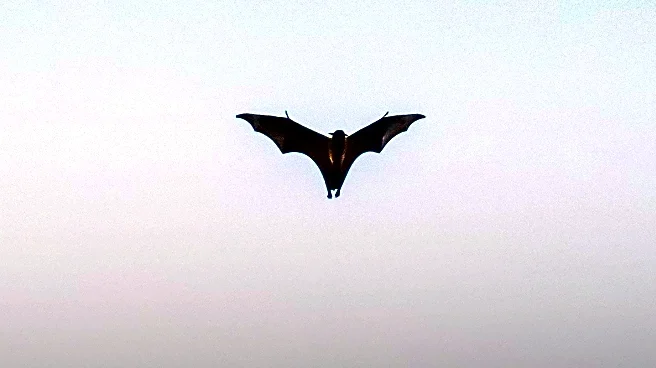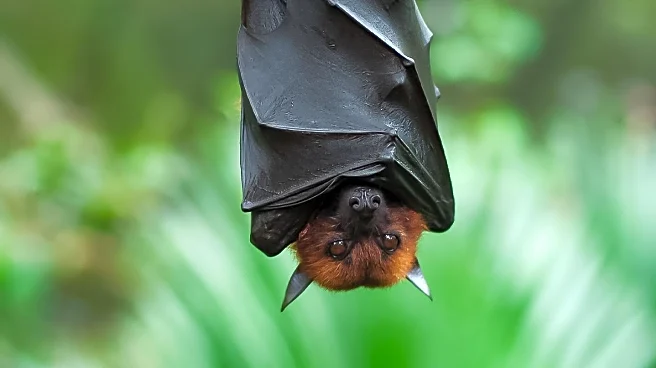What's Happening?
A recent study published in Communications Biology has identified that only a few bat lineages are responsible for harboring viruses with high epidemic potential. This research challenges the broad perception
that all bats are significant carriers of zoonotic diseases. The study utilized the Global Virome in One Network database to analyze 2,637 mammal-virus associations, revealing that viral epidemic potential is not uniformly distributed across the bat phylogeny. The findings suggest that specific bat clades, particularly those that are insectivores and roost in human-made structures, are more likely to host viruses with high transmissibility and virulence. This research aims to inform more targeted disease monitoring and improve public perception of bats.
Why It's Important?
The study's findings are significant as they propose a shift from generalized fear of bats to a more nuanced understanding of zoonotic risks. By identifying specific high-risk bat clades, resources for surveillance and prevention can be more effectively allocated, potentially reducing the emergence of zoonotic diseases. This approach could also help in reframing human-bat interactions, emphasizing the ecological benefits bats provide, such as pollination and pest control. The research underscores the importance of addressing human activities like habitat destruction, which are primary drivers of zoonotic disease emergence.
What's Next?
The study suggests that future surveillance efforts should focus on the identified high-risk bat clades to better manage and prevent potential zoonotic spillovers. This targeted approach could lead to more efficient use of resources in monitoring and controlling zoonotic diseases. Additionally, the findings may influence conservation strategies, promoting the protection of bat habitats to maintain their ecological roles while minimizing disease risks.
Beyond the Headlines
The research highlights the ethical considerations of culling bats out of fear, which could inadvertently increase spillover risks. It also points to the need for public education to shift perceptions about bats and their role in ecosystems. Long-term, this study could influence policy changes in wildlife management and disease prevention strategies.











